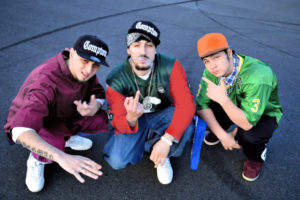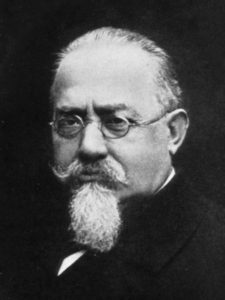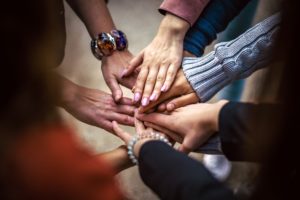The basis of rational choice theory is that people make rational decisions. They weigh the costs and benefits of a situation and then decide whether it’s worth it to go ahead and commit a crime or not. Rational choice theory is not interested in examining how certain psychological factors like for example psychopathy cause some people to commit crime. It is also not interested in sociological causes for crime, like how people’s criminal friends draw them into crime. Instead, ...
Criminology Crash Course
The Symbolic Interactionism Perspective in Sociology and Criminology
Symbolic interactionism is about how people see the world around them and how they make sense of it. As people go about their daily lives, they constantly observe other people as well as objects and events around them. For example, they see a crowd of people protesting, they speak with someone face to face, they hear about a new event, or they are working with a coworker on a project. The point of symbolic interactionism is that people do not observe these situations ...
Differential Association Theory: Sutherland’s Sociology and Criminology of Deviance Explained
Differential association theory was formulated by Edwin Sutherland. In 1939, he published an important book named “Principles of Criminology” in which he described the theory. In a nutshell, the theory of differential association says that offenders commit crime because they have learned it from other people in intimate, personal groups. Criminal Behavior is Learned According to Sutherland, all important forms of human behavior, including criminal behavior, are ...
Labeling theory: How Labelling Explains Deviance and Crime in Criminology and Sociology
Labeling theory focuses on how other people’s opinions can influence the way we think about ourselves. More specifically, labeling theory says that when other people see and define us as criminal, that’s exactly what we become. We change our self-concept to fit what other people think of us, and if they give us the label of a criminal, we will ultimately behave according to that label. In other words, we will become offenders because other people say that we are ...
Routine Activities Theory: Definition of the Routine Activity Approach to Crime
Routine activities theory is a theory that tries to explain why crime happens. It is very well-known in the fields of criminology and sociology and was originally developed by Lawrence Cohen and Marcus Felson. In 1979, they published a now famous article where they proposed the central idea of the theory. Routine Activities Theory: Definition and Meaning So what does routine activities theory say? Routine activities theory is based on the idea that offenders make ...
Psychopathy: What is it, how to test for it, and the case of Aileen Wuornos
This post and accompanying video discuss psychopathy, what it is, and how it relates to the case of convicted serial killer Aileen Wuornos. I also go through the psychopathy test PCL-R (Psychopathy Checklist Revised), which is a checklist developed by psychologist Robert Hare. What is Psychopathy? The term “psychopath” is fairly widespread and used often in the popular media. Think, for example of the movie “American Psycho”, where Christian Bale plays an investment ...
The Big Five Personality Traits Model Explained
This post and accompanying video give a concise overview of the Big Five personality traits model. The Big Five factor theory of personality is important in personality psychology, but the model is also used in e.g., the psychology of organizational behavior and in criminology to explain crime and criminal behavior. Personality Traits In everyday life, and when we look at other people, we often characterize them in certain ways: Some people are extroverted and ...
Cesare Lombroso: Theory of Crime, Criminal Man, and Atavism
Cesare Lombroso was born in 1835 in Verona in Italy. He was an Italian doctor who did research and wrote on a variety of topics, for example mental diseases, scientific ways to study corpses, and brain pathology. But his most important work, and certainly the work that he’s best known for today, is the book “The Criminal Man” (“L’Uomo delinquente”). Criminal Man, Theory of Atavism, and Degeneration In “The Criminal Man”, first published in 1876, Lombroso developed ...
The Need to Belong: A Brief Summary
This post and accompanying video provide a quick summary and overview of the need to belong. The need to belong is the central topic of a classic paper from 1995 that was written by psychologists Baumeister and Leary. The basic hypothesis of their paper is that “a need to belong is a fundamental human motivation” (p. 497). The Belongingness Hypothesis So what is the need to belong? The need to belong refers to the basic need of people to belong to other people. This ...
The Jack Roller Summary by Clifford Shaw
The book “The Jack-Roller” is an absolute classic in criminology. The book was first published in 1930 and tells the life story of Stanley, who was a young delinquent in Chicago. Clifford Shaw, who is the criminologist who wrote the book, first contacted Stanley when he was 16 years old, and then followed him over the next 6 years to help write Stanley’s life history. This post covering a "The Jack-Roller Summary" provides a concise overview of the main points from the ...










